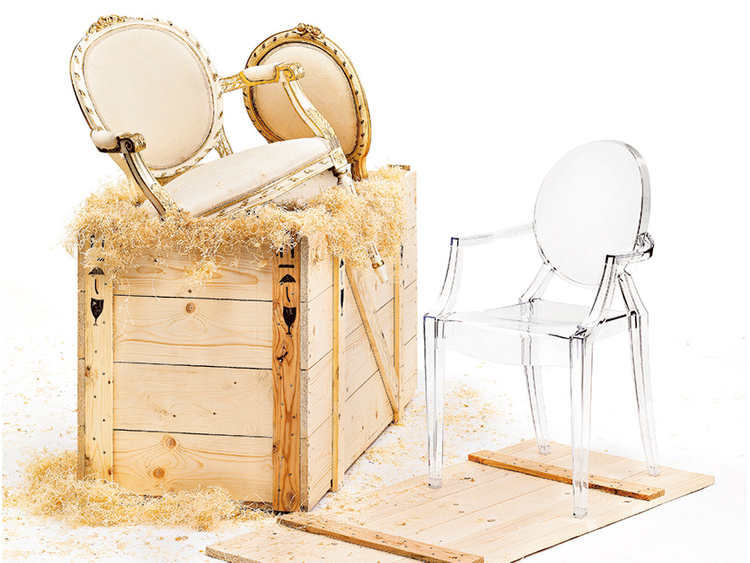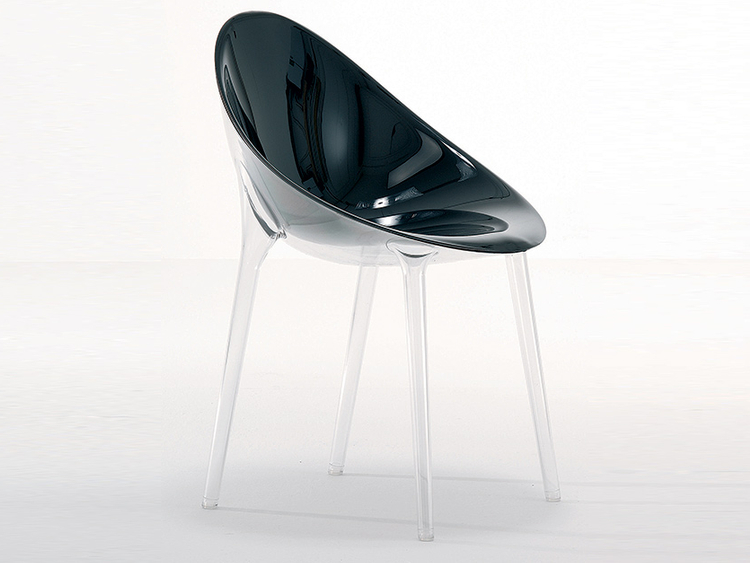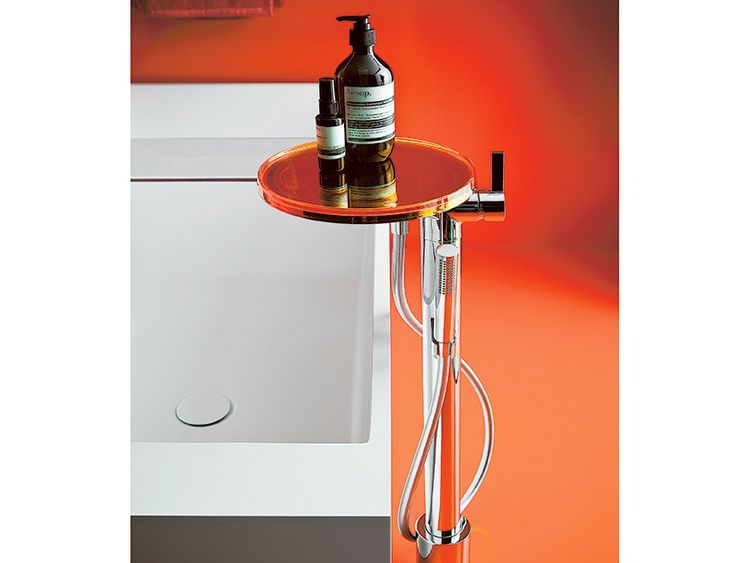
It is not every day you get to meet a legend. In Claudio Luti’s case, it is even more special as he makes a strong case for understanding the commerce of design. Thanks to his acumen for business, the president and owner of Kartell has introduced us to a plethora of modern design icons and the success of many design stars.
It’s been 26 years since Luti took over the iconic Italian company from his father-in-law, Giulio Castelli, who founded Karetell in 1949. Now three generations into the family business, the brand remains loyal to its founder’s core objectives. “My father-in-law had the intuition to produce objects with innovative features seen as the application of new technologies, with an eye to economy of materials and efficiency in the process,” recalls Luti. “This original intuition has not changed through the years; it has just evolved.”
Castelli first started producing automobile accessories, homeware, lighting fixtures, etc, and in 1963, with the opening of the Habitat Division, ventured into furniture and furnishing accessories made of plastics. True to form, Kartell introduced the world’s first polycarbonate design object — La Marie — by designer Philippe Starck in 1999. “Nowadays it is an icon, but back then it was a revolution and throughout these last 15 years it has been in constant evolution.”
Diversification is indeed a winning tool, said Luti explaining Kartell’s first bathroom project — Kartell by Laufen — in 2013. This year, a new tableware collection — Kartell in Tavola — boasts collaborations with top-notch designers Patricia Urquiola, Jean-Marie Massaud, Philippe Starck and three Italian Chefs — Davide Oldani, Carlo Cracco, Andrea Berton. Expanding their presence in the Middle East, Kartell recently launched their spanking new space at Galeries Lafayette, Dubai Mall, with further plans for expansion afoot.
Key to Kartell’s steady evolution — in both design and commercial success — is its collaboration with designers. Luti is too much of a businessman to be swayed by romantic notions when it comes to choosing designers to collaborate with. “Designers that work with Kartell have to be able to interpret the specific needs of an industrial based company such as Kartell without altering its essence,” he explained. The logic is quite simple — to produce an industrial product in series which generates profit as well — you have to first develop the technology for it and the creation of a moulds or models requires investment. “Time, money and emotion. You have to have a feel for Kartell if you’re working with us.”
Clearly Starck gets it — his works for Kartell span 25 years and a gamut of much revered design pieces. “Philippe is a real genius. We met at the very beginning of our careers when I had just taken over Kartell in 1988,” said Luti about his relationship with arguably the most loved designer in the Kartell catalogue. “Our first product together was the Dr. Glob chair.”
Since then, Kartell has taken Starck to homes of design lovers consistently. From the Eros and Louis Ghost chairs to the Topless and Aunt Jamy Tables, the designer’s works have given many homes a new style statement.
But nothing exemplifies Kartell quite like the Bourgie Lamp. “It’s ironic in the way it’s so baroque and yet light.”
Celebrating stylish 65 years
Transparent in its tongue-in-cheek whimsy, the Bourgie, designed by Kartell’s in-house art director of 20 years, Ferruccio Laviani, represents all that is amazing about Kartell’s love for polycarbonate. To celebrate their 65th anniversary, Kartell invited designer friends and collaborators from all over the world to reinterpret the iconic piece as a one-off design to be part of a travelling exhibit. In Dubai, Kartell teamed with s*uce gifts and Downtown Design to present the Bourgie as seen by top regional designers — Nada Debs, Bojka, Nadine Kanso, Rana Salam, Khalid Shafar, Zeinab Al Hashemi, among others. They are now showcased at s*uce gifts, Safa Park.
— Pratyush Sarup edits the design site www.designcarrot.net. You can follow the site on twitter @DesignCarrot










